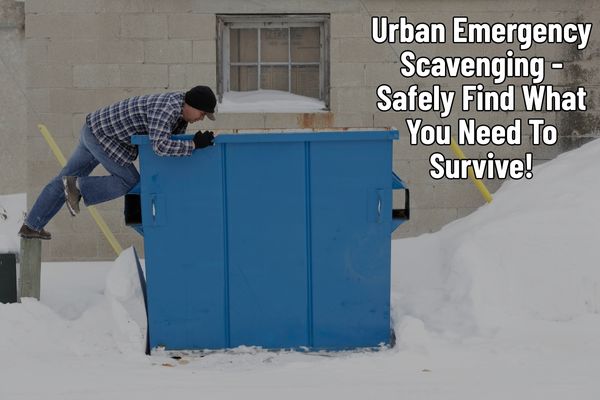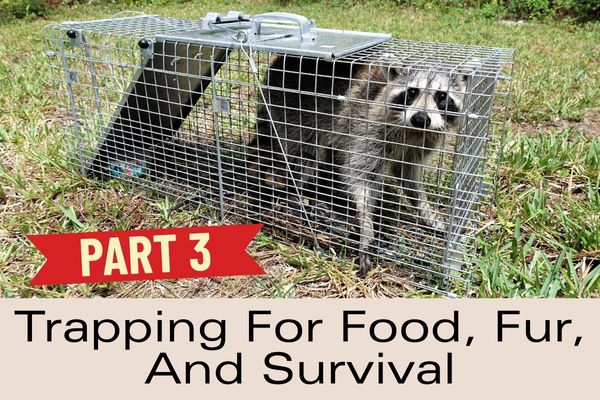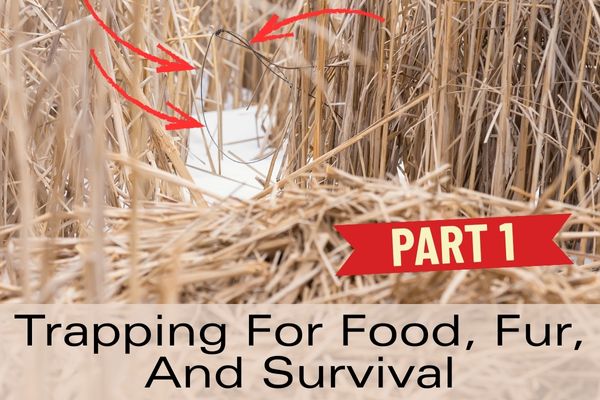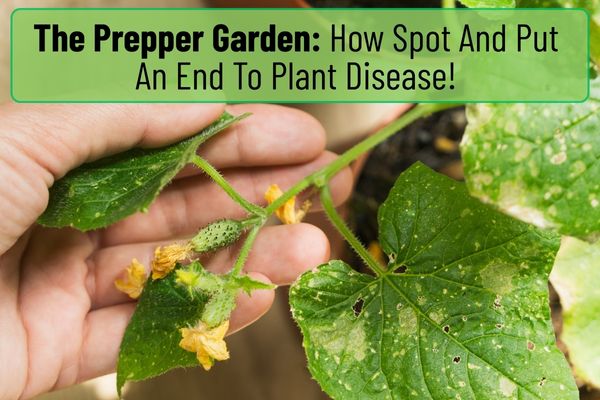When an emergency or disaster strikes how do people in urban areas scavenge for what they need when supplies are low?
Knowing how to safely and legally find essential resources can be the difference between life and death.
If stores were not open and your credit card was nothing more than plastic and cash was as valuable as toilet paper, how could you secure resources to survive?
This guide will help you unlock another fundamental skills to scavenge urban areas during emergency situations, safely and ethically.
Understanding Emergency Scavenging vs. Looting
Before anything else, we must understand why it’s crucial to distinguish between scavenging and looting. Scavenging entails collecting discarded, abandoned, or freely available resources necessary for surviving a crisis. In one case, the property belongs to nobody. In another, the property has a clear owner that isn’t you.
Looting involves taking property that clearly belongs to others. Always respect private property and follow local emergency protocols when they exist. After all, you never know when civil society will resume again.
During declared emergencies, authorities often establish resource distribution points and evacuation procedures. These official channels are a good first option. But what happens when they become overburdened or fall apart altogether? Scavenging becomes relevant when these systems are overwhelmed, inaccessible, or unestablished.
Essential Resources to Prioritize
In any survival situation, your priorities should follow the “Rule of Threes“: you can survive three minutes without air, three days without water, and three weeks without food. In urban emergencies, shelter and security often become immediate concerns as well.
Water: It tops your priority list. In urban areas, water can be found in several locations even when taps run dry. Hot water heaters typically contain 30-80 gallons of clean water that remain accessible even when main lines fail. Toilet tanks (not bowls) contain clean water, though you should purify before drinking. Swimming pools, while requiring treatment, provide substantial water sources. Plus, rain collection becomes vital – any clean container serves as a vessel for collection .
Additionally, urban food sources are more diverse than many realize. Abandoned grocery stores after evacuation orders may contain damaged but edible goods. However, only take from clearly abandoned locations, and prioritize items that would otherwise spoil. Urban foraging offers additional options: many cities have fruit trees in parks or abandoned lots. Common edible plants include dandelions, plantain, and clover, though proper identification is essential.
Shelter materials become critical in extended emergencies. Tarps, plastic sheeting, cardboard, and insulation materials can be found in construction dumpsters or damaged buildings. Focus on waterproof materials and insulation that can help you maintain body temperature during colder nights.
Tools and supplies multiply your effectiveness exponentially. Hardware stores, garages, and utility areas may contain useful items like knives, rope, duct tape, batteries, and basic tools. Medical supplies might be found in abandoned pharmacies or office buildings with first aid stations.
Safe Locations and Timing
Successful urban scavenging requires understanding where to look and when to do it safely. Construction sites often contain valuable materials in dumpsters or storage areas, particularly after business hours when workers have left. However, respect posted signs and avoid active work zones.
Commercial areas frequently discard useful items. Restaurant dumpsters may contain packaged foods still within expiration dates, but take care with perishable items. Office buildings often discard electronics, batteries, and basic supplies during clean-outs.
Residential areas require the most caution and ethical consideration. Only scavenge from clearly abandoned properties or items placed for bulk trash collection. Never enter occupied homes or take items that clearly belong to someone who might return.
Timing your activities is crucial for both safety and effectiveness. Early morning hours often provide the safest conditions with fewer people around. It’s also when many businesses discard items. Avoid scavenging during peak emergency response times when your activities might interfere with official operations or when desperate people might pose security risks.
Safety Protocols and Health Considerations
Urban scavenging carries inherent risks that require careful management. Always prioritize personal safety over acquiring resources. Travel in groups when possible and establish check-in protocols with your companions.
Structural hazards could pose significant dangers in emergency-damaged urban areas. Avoid entering damaged buildings or areas with obvious structural instability. Be cautious around power lines, gas leaks, and flood-damaged areas that may contain contaminated water or unstable foundations.
Health considerations become paramount when normal sanitation systems fail. Always wear protective gear when available (like gloves, sturdy shoes, and eye protection to help shield you from cuts, infections, and contamination). Tetanus becomes a real risk when handling debris and damaged materials, so ensure that your hands and exposed skin are protected.
Contamination risks require constant vigilance. Avoid scavenging near chemical storage areas, gas stations, or industrial facilities where hazardous materials might have leaked. Food safety demands extra attention. When in doubt, discard questionable items rather than risk foodborne illness.
Water Procurement and Purification
Water procurement in urban environments requires both finding sources and making them safe for consumption. Rainwater collection becomes highly effective with proper setup – gutters, roof systems, and large containers can yield significant quantities during storms.
Stream and pond water in urban parks may be available, though these sources typically require extensive treatment due to pollution and contamination. Always assume urban surface water is contaminated and treat accordingly.
Purification methods range from simple to complex. Boiling remains the most reliable method when fuel is available – maintain a rolling boil for at least one minute to kill pathogens. Water purification tablets or drops provide portable solutions, though they require proper dosing and contact time to be effective.
Improvised filtration can remove visible contaminants and improve taste. Layer cloth, sand, charcoal, and gravel in a container to create a basic filter. This method doesn’t remove all pathogens or chemicals, but it can be a good start. Commercial portable filters, if available, provide reliable results.
Solar disinfection offers a fuel-free purification method. Fill clear plastic bottles with water and place them in direct sunlight for 6-8 hours. UV radiation helps kill many pathogens.
Food Safety and Identification
Urban food scavenging requires balancing nutritional needs with safety concerns. Packaged foods offer the safest options. Canned goods can remain safe even after expiration dates if containers aren’t damaged, though quality may decrease. Check for rust, dents, or swelling that might indicate contamination.
Fresh produce evaluation requires careful inspection. Fruits and vegetables should be firm, properly colored, and free from mold or soft spots. When in doubt, cooking can destroy many pathogens, though it won’t eliminate all toxins.
Urban foraging demands extensive plant identification knowledge. Never eat anything you cannot identify with complete certainty. Common edible urban plants include:
:: Dandelions: entirely edible, though older leaves become bitter
:: Plantain: leaves can be eaten raw or cooked, seeds are nutritious
:: Clover: flowers and leaves are edible, high in protein
:: Wild garlic: easily identified by smell, bulbs and greens are edible
However, urban plants may contain higher levels of pollutants from vehicle emissions and industrial activity. Wash thoroughly and avoid plants near roads or industrial areas.
Protein sources in urban areas primarily come from packaged goods, though some urban areas support small game like rabbits or birds. Fishing in urban water bodies is possible but requires knowledge of local contamination levels.
Legal and Ethical Considerations
Emergency scavenging operates in a complex legal and ethical landscape that varies by jurisdiction and circumstances. During declared emergencies, normal property laws may be suspended or modified, but these changes are typically announced through official channels.
The principle of abandonment generally protects scavengers who take clearly discarded items. Trash placed for collection, items in dumpsters, and materials left in obviously abandoned properties typically fall into this category. However, private property remains private property even during emergencies unless officially requisitioned by authorities.
Community cooperation often proves more effective than individual scavenging. Organize neighborhood resource-sharing networks where people can contribute skills, tools, and found materials for collective benefit. This approach reduces individual risk while maximizing community resilience.
Building Long-Term Urban Resilience
While this guide focuses on emergency scavenging, building resilience before an emergency strikes is most effective. Develop relationships with neighbors and local community groups that can provide mutual aid during crises. Learn about your area’s natural and man-made resources, including locations of water sources, potential shelter materials, and edible plants.
Create emergency supply caches in multiple locations if possible. While not everyone can maintain extensive stockpiles, even small caches of water purification tablets, basic tools, and non-perishable food can bridge critical gaps during the initial phases of an emergency.
Practice skills before you need them. Learn plant identification, water purification techniques, and basic tool use during non-emergency times. Join local emergency response groups or take survival courses that provide hands-on experience in controlled environments.
Urban emergency scavenging represents a skillset that hopefully you will never need to use. However, understanding these principles and techniques can provide critical capabilities when normal support systems fail. Always prioritize safety over accumulation, respect others’ property and needs, and remember that emergency situations bring out both the best and worst in people. Preparation, knowledge, and community cooperation remain your best tools for surviving and thriving during urban emergencies.
Remember that emergency situations are temporary. Your actions during these times can impact your and your community’s recovery. Scavenge responsibly, share resources when possible, and work toward restoring normal community functions as quickly as circumstances allow.




